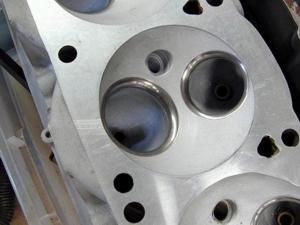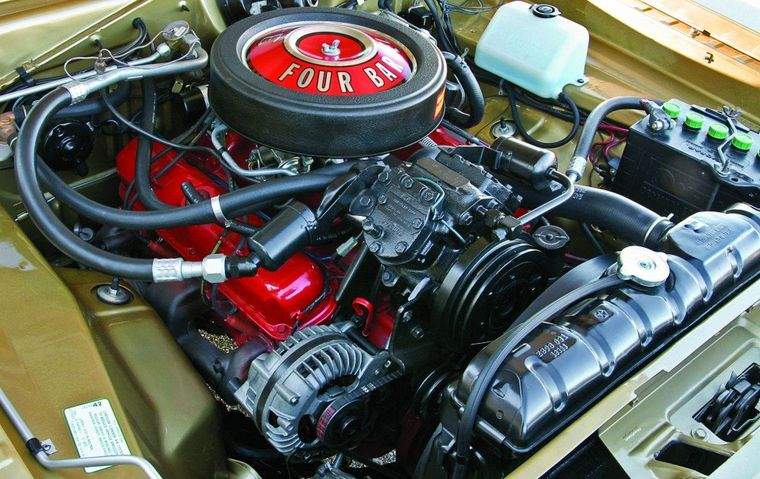HEMI Engine
During WWII Chrysler built two large engines with hemispherical caps: one of them was a V-12 for application in tanks and the other was a V-16 that operates in an inverted position for the aeronautical industry. But they were never mass-produced.
However, between 1941 and 1945, the Detroit Chrysler factory produced 22,234 tanks and the Chrysler's Chicago plant produced Wright Cyclone radial engines for the B-29 area fortress.
After World War II, the United States entered a time of prosperity and the automotive industry was no stranger, which was evident in its cars, which were becoming more powerful, luxurious and with better aesthetics.
Americans were beginning to see cars as more than just transportation. Several specialized magazines were born that could be found in newspaper kiosks where fans and speed lovers could read about road tests, of different cars, comparing their favorite models.

The Hemi engine was introduced by Chrysler in 1951 in a new line of V8 engines called "Hemi". The name Hemi came from the shape of the cylinder heads, which had a hemispherical combustion chamber design.
Although the design was not new, it was the first time it was used for cars.
Most cars, made before 1950 use what is known as a flat top, where the valves are in the block, rather than the top, and open into a piston-side chamber.
This very simple design: "the flat top" is still in use today, but mostly on small, inexpensive engines like those in lawn mowers.
The Hemi engine is different from standard V8 engines by the following:

Source
The combustion chambers are hemispherical in shape, which creates better thermal and volumetric efficiency. Therefore, the engine can create more power without increasing compression.
The valve placement within the combustion chambers are directly facing each other, rather than side to side. This allows better flow of the intake and exhaust gases.
The spark plugs are in a better position within the combustion chamber to provide maximum ignition.
2nd Generation HEMI Engine.
The second generation Hemi engine made its debut in 1964, its displacement being 426 CID (6,980cc). This engine was used on the tracks and won the first three places in the 1964 Daytona 500.
It took two years for this engine to reach street cars: the Dodge and Plymouth. The models in which it was offered were the Dodge Charger and Coronet, as well as the Plymouth Belvedere and Satellite.
This engine was in production until 1971 and in those six years its power remained at 425 HP at 5,000 RPM and its torque at 490 lb.-ft. at 4,000 RPM.
In 1968 a new camshaft was introduced with a larger opening, new piston rings and valve springs. This engine received the name of Hemi Phase II.
In 1970, hydraulic lifters were introduced for the valves with new pushrods, a design that was maintained until the end of the production of this engine.
The monoblock was the same from inception until January 1970, when an improved monoblock was introduced to accept the use of a supercharger
However, the new pollutant emission control measures and regulations that were being planned by the United States government forced Chrysler to end production of the second generation Hemi engine in 1971.
@juanmolina




@tipu curate 3
Upvoted 👌 (Mana: 39/78) Liquid rewards.
Congratulations @juanmolina! You have completed the following achievement on the Hive blockchain and have been rewarded with new badge(s) :
You can view your badges on your board and compare yourself to others in the Ranking
If you no longer want to receive notifications, reply to this comment with the word
STOPYour post has been voted as a part of Encouragement program. Keep up the good work!
Try https://ecency.com and Earn Points in every action (being online, posting, commenting, reblog, vote and more).
Boost your earnings, double reward, double fun! 😉
Support Ecency, in our mission:
Ecency: https://ecency.com/proposals/141
Hivesigner: Vote for Proposal